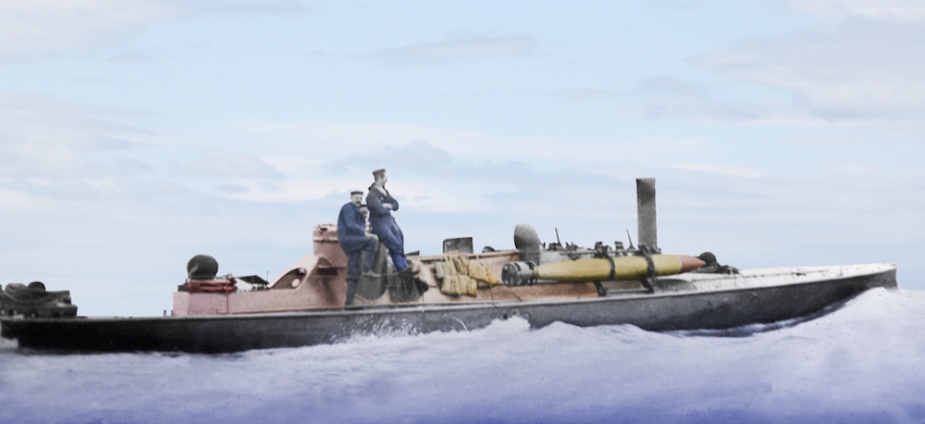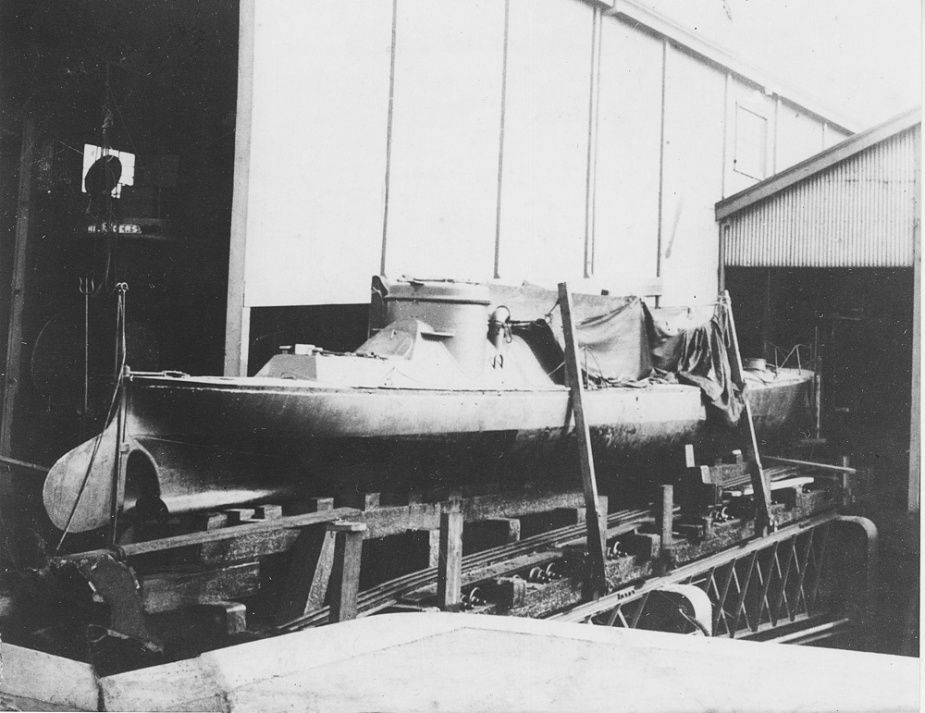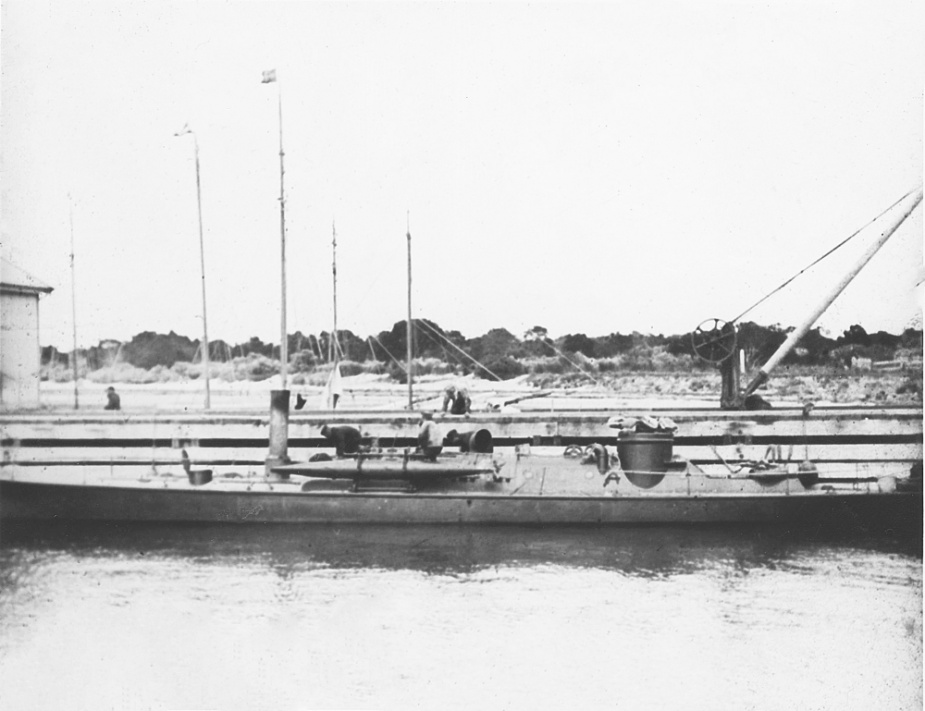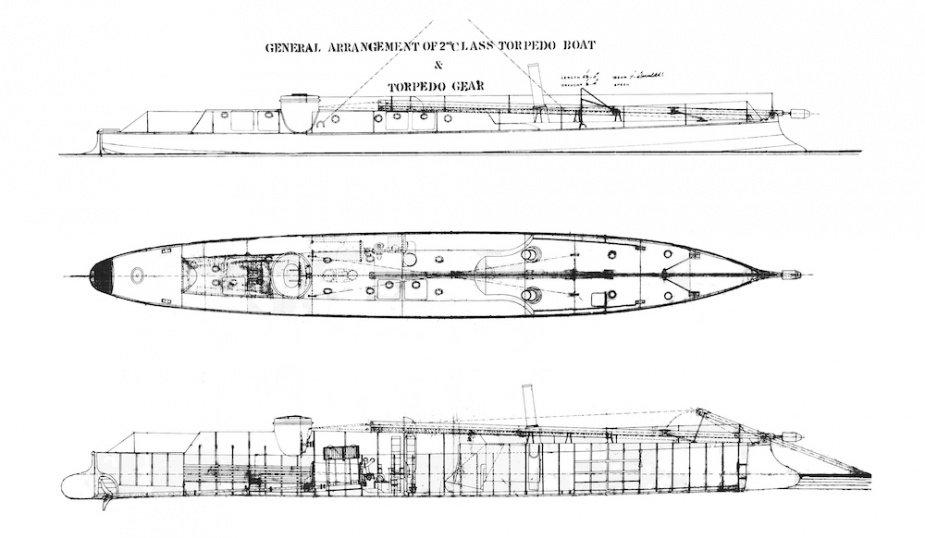HMAS Lonsdale (HMVS)
| Builder |
Thornycroft & Co |
|---|---|
| Dimensions & Displacement | |
| Displacement | 12 tonnes |
| Length | 67ft |
| Beam | 7.5ft |
| Draught | 3ft 2in |
| Performance | |
| Speed | 17 knots |
| Complement | |
| Crew | 7 |
| Propulsion | |
| Machinery | Single screw |
| Horsepower | 150 |
| Armament | |
| Torpedoes | 2 x 14-inch torpedoes in dropping gear |
In 1884 the Australian colony of Victoria added two Second Class Torpedo boats to its navy. The vessels were named Lonsdale & Nepean and were built by the English shipbuilder Thornycroft and Co, Chiswick, London. Lonsdale was completed in 1884 and together with Nepean she was transported to Australia as deck cargo aboard SS Port Darwin arriving in Melbourne on 7 July 1884.
The following day the Argus Newspaper described the appearance of the two vessels which brought the strength of Victoria’s Navy up to seven vessels.
The hull is divided into watertight compartments and the forward part contains the space to be occupied by the crew. The boiler is of the locomotive type having a working pressure of 130 lb per square inch. The engines are compound surface-condensing having cylinders of 8¼ inches and 13½ inches diameter respectively with 8-inch stroke and are of 100 indicated horsepower. There are also an air pump, feed pumps and donkey pump. The fan is 2 feet 3 inches in diameter and makes about 1300 revolutions per minute. Abaft the engine room is a cabin with accommodation for two officers fitted similarly to the large boat [HMVS Childers].
Lonsdale and Nepean were manoeuvred from a small pill-box conning tower which was off-set slightly to port. It was fitted with a telegraph to communicate with her engine and boilers room. No torpedo tubes were fitted; instead, two sets of torpedo dropping gear were used to launch 14-inch Whitehead torpedoes from either side of the vessels. Improved torpedo dropping apparatus replaced the original fit in 1888.
Following their arrival both vessels underwent a series of trials before joining Victoria, Albert and Childers to escort the Governor of Victoria, embarked in SS Sir Henry Loch, from the Heads to the training ship HMVS Nelson. Following a reception in Nelson the vessels escorted the governor back to Port Melbourne.
Lonsdale participated in the established pattern of exercises and annual manoeuvres conducted by ships of Victoria’s navy, chiefly on Port Phillip Bay. When not in use she and her sister ship Nepean were hauled out of the water and placed on a slipway at Williamstown. Both vessels underwent modifications in 1888 which saw their sea-keeping qualities improve.
In 1901, along with the rest of the Victorian fleet, Lonsdale was transferred to Commonwealth control following Federation. In 1911 she briefly became a unit of the Royal Australian Navy before being declared for disposal in 1912. Both Lonsdale and Nepean were subsequently stripped of all useful fittings at Williamstown before being towed to Swan Island and beached ashore.
On 9 May 1914 approval was given for their sale by tender but little interest in them was shown and they subsequently remained beached at Swan Island. There is some suggestion that the two vessels were later broken up on the banks of the Yarra River, a short distance from Melbourne, although the remains of what is thought to be one of them was rediscovered at Queenscliff in 1983.
Further reading
- 'Australia’s Colonial Navies', Ross Gillett, The Naval Historical Society of Australia, Sydney, NSW, 1982.
- 'Australia’s Ships of War', John Bastock, Angus & Robertson, Sydney, NSW, 1975.
- 'Australian Colonial Navies', Colin Jones, Australian War Memorial, Canberra, ACT, 1986.








